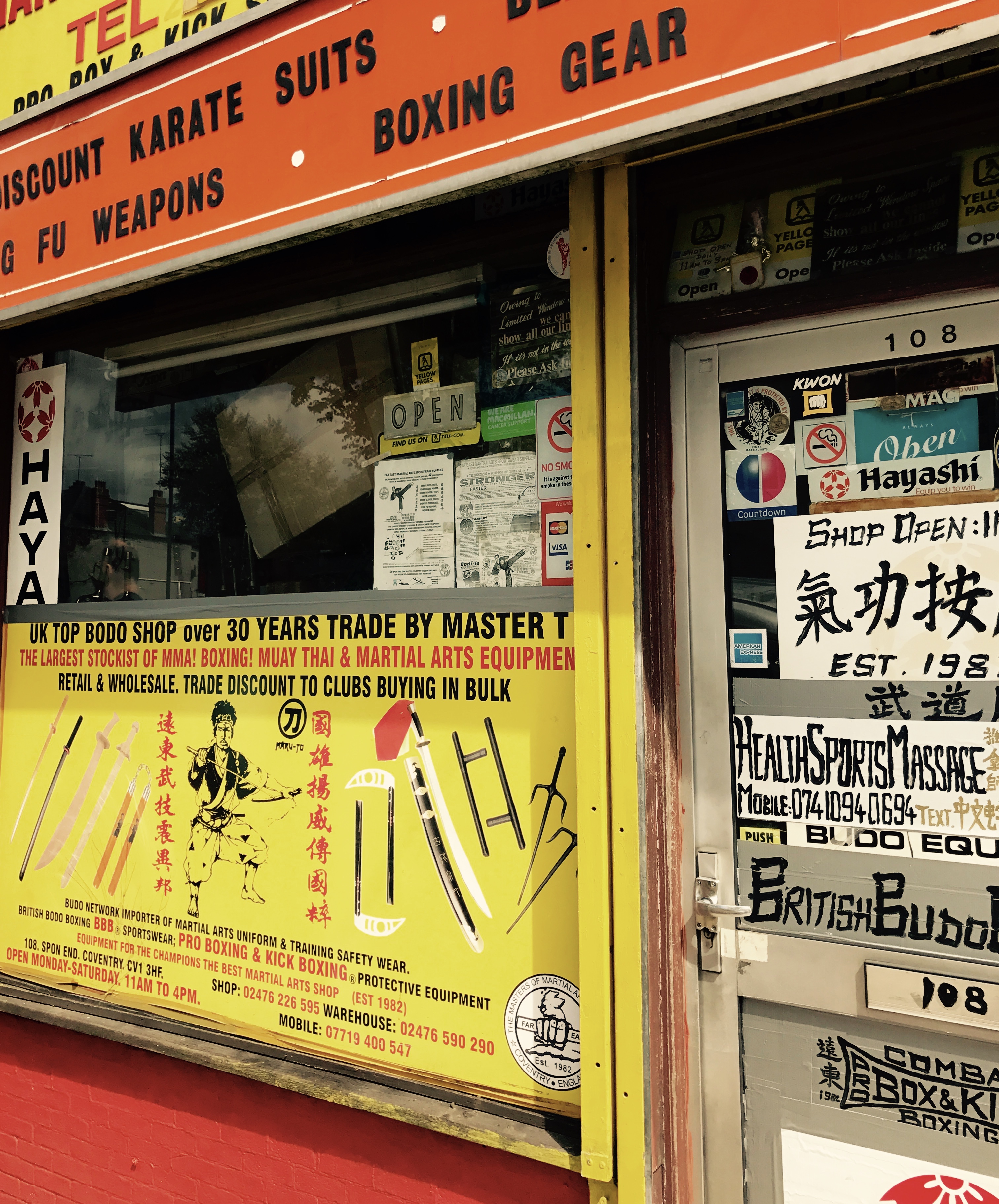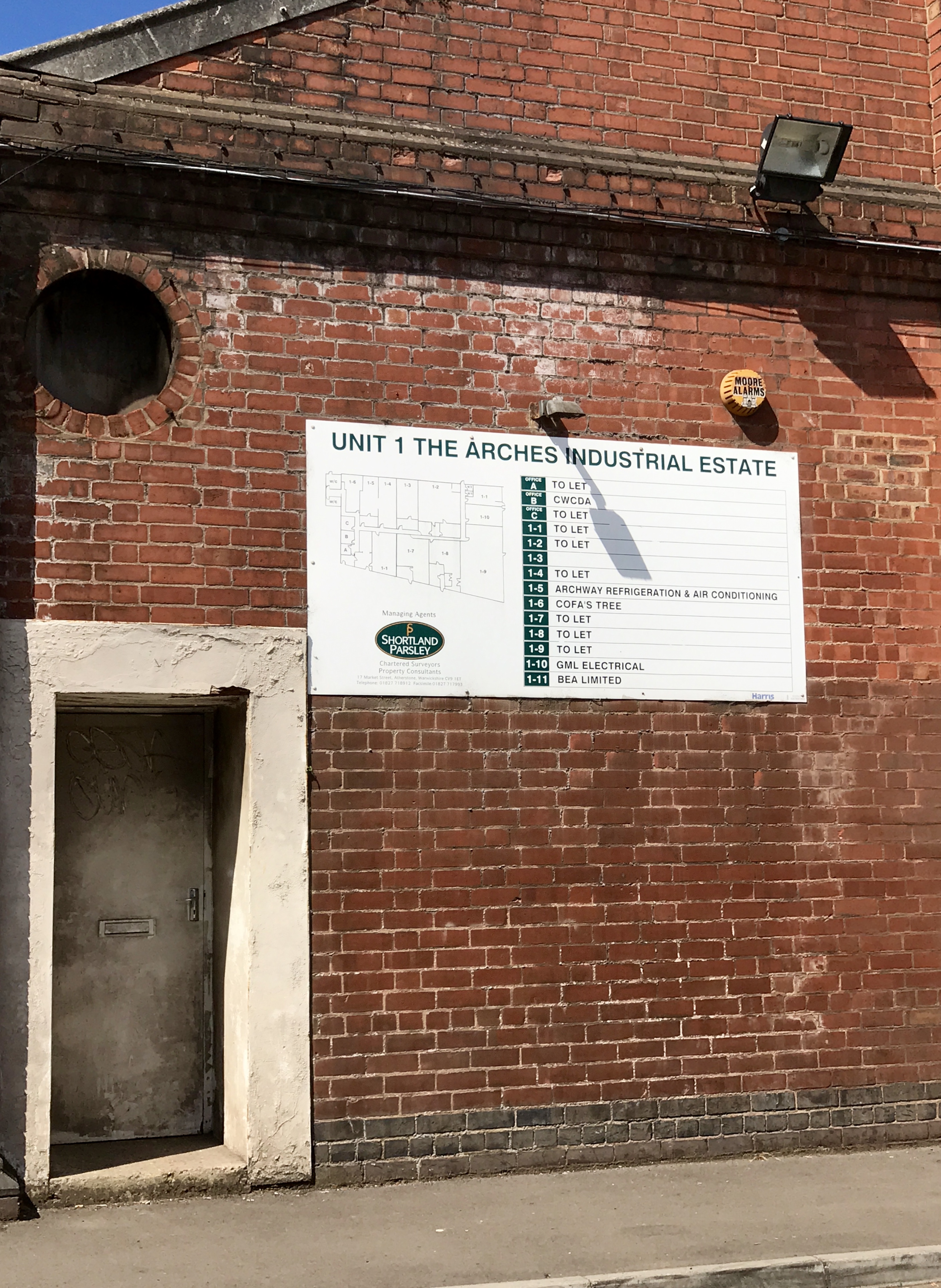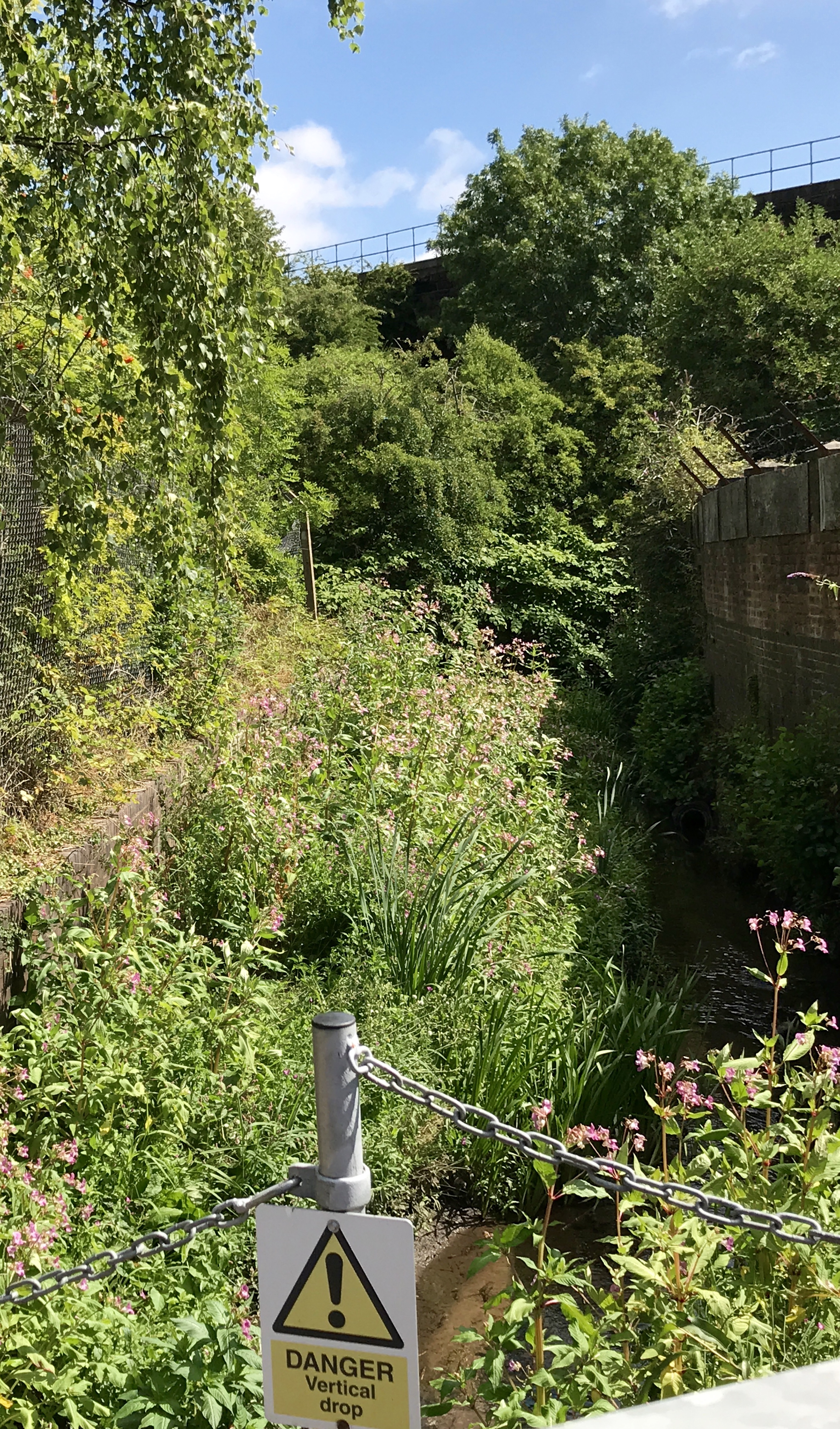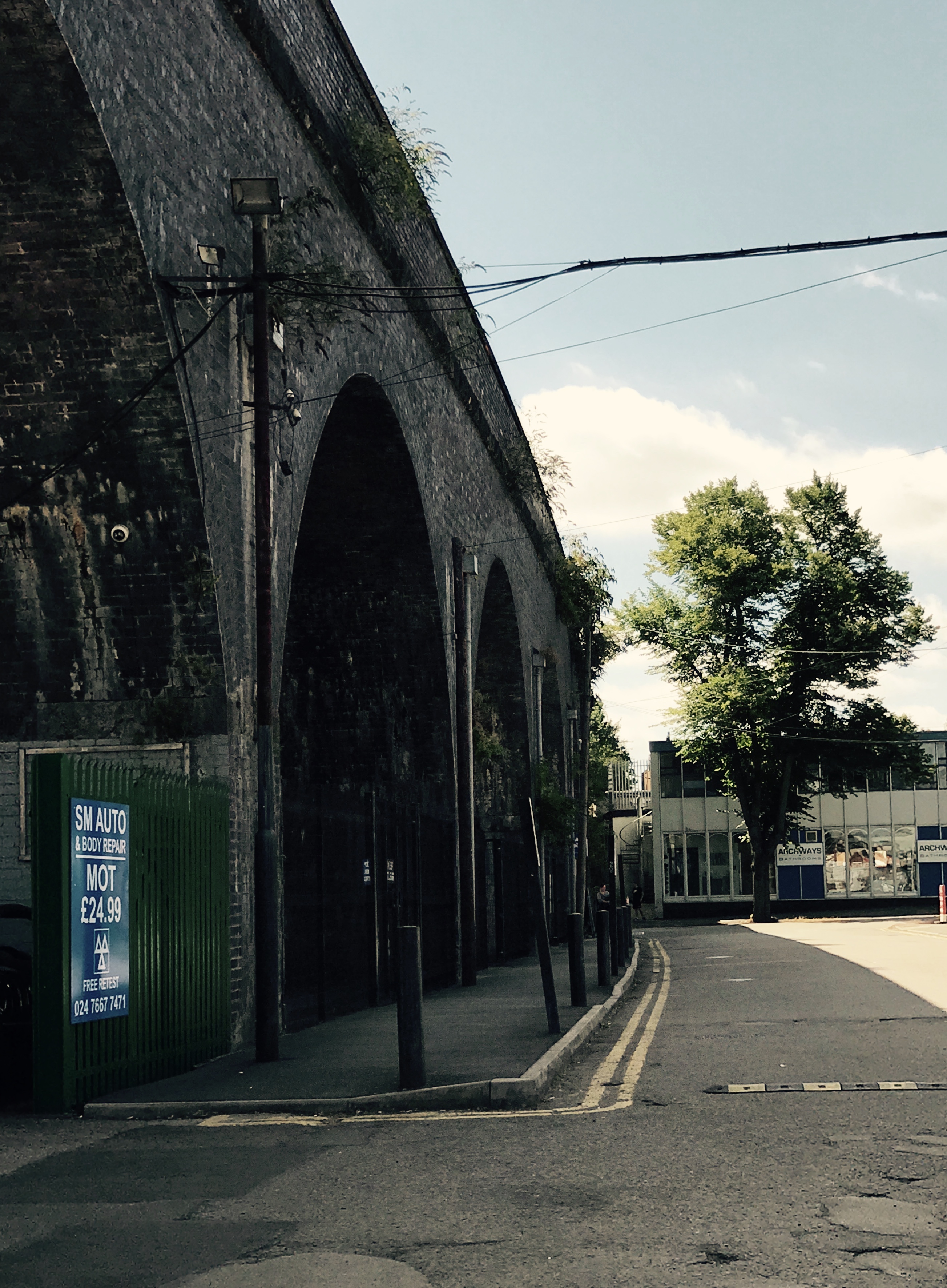If you spend enough time in Coventry, at some point you inevitably will cross paths with Alan, Coventry’s talented independent film maker. Alan has been, for a long time, among the most dedicated of chroniclers for happenings in Coventry, both big and small. If you have not had the pleasure of meeting him in one of the city’s many events, then you might know him from his early 1990s video ode to the city ‘Sent to Coventry’.
Alan is, also, a resident of Spon End, and he generously agreed to give us a personal tour of the neighbourhood. He took us on a journey of his memories through streets and places, towards the edges where Spon End begins or ends. We walked by the Ring Road, through the Arches, at times with Alan’s voice disappearing as Coventry’s rushing sounds disrupted and punctuated our tour. Then, suddenly, his voice would appear again picking up the threads of what Spon End used to be and continues to be for him.
One of Coventry’s city centre buskers breaks into singing an opera while we head to Spon End… and Alan tells us:
I moved to Spon End when I started working at Warwick University… [It was] about 1991, [and I stayed in] a tiny bedsit, then I moved to a bigger flat… You have to remember that it was different back then, they had rents you could live off… It was entirely different.
We make our way past “the real start of the tour” at St. John the Baptist Church, whilst down the street another musical reference greets us.
That, over there… that tree is the Mulberry bush that the prisoners went around, that’s the basis of the song “here we go around the Mulberry bush”…

As we walk down the street past medieval Spon End, a sound of an alarm from the past greets us. It comes from where the GEC used to be.
That was the GEC Spon Street… The thing I remember about the GEC Spon Street is that it had something like a barrier… When it was time to go home, or time for dinner, all the workers queued up, a lot of them women, in front of this area… And, an alarm went off and they all streamed out, you’d see streams passing by… It has radically changed now.
Alan, with his fascination for architecture, explains that the Rudge Building was probably one of the first reinforced concrete buildings in city, and that it should have been kept.
We then make out way into Spon End’s subway and the acoustics change altogether.
This is our wonderfully smelling subway, it’s been split as a bike and walk for years. Sustrans are trying to do something about it… It is now better that they have moved to LED lights, it used to be fluorescent and they used to get vandalised, and then the subway would be in darkness.
We emerge from the subway, as Alan points to Meadow House and the adjacent council estate.
[It is probably one of] the most deprived areas in the country… It is on prime building land. It is one to four-storeys high, which is quite low-rise by today’s standards… [At the time it was planned,] it was a city-in-the-sky kind of idea.
While a lot of our walk-and-talk tour revolved around how shops have changed and pubs have closed, Alan was also keen to point out the buildings that have always been there. One among them is the subject of a story we recorded elsewhere (Phillip‘s shop).
I think the oldest of these shops is the far eastern karate shop… I never see people going in…

By then, we were walking on the main road. Busy and lazy cars passed by drowning our storyteller’s voice until we reached the Arches, where the overbearing sound of the traffic subsided and was overtaken by the banging racket of the many car repairing workshops.
This end of the Spon End is marked by the bridge, ‘the arch de triumph’ of Spon End… There was a cinema where it now says Nissan… Over there is the KOCO building, unit 15… I almost lived down there for seven years, I did repairs. The story was that the guy bought the whole area and then sold the housing for more than he paid for the whole factory.

We continue our way all the way towards the Sherbourne River to arrive where Spon End really ends for Alan. In absolute silence, he continues…
We are coming to the end of Spon End. This is [where] the Alvis factory who, for years, have been building tanks, [used to be]. They moved to the South Side of Coventry…
…And these [here] are the Himalayan Balsam. [Alan points to the flowers along the River]. The pink flowers are an invader flower, it is a foreign, alien species… It dies off early, and therefore it doesn’t hold the river banks together in the way the indigenous species do… So, it leads to the erosion of the river banks.

As we retrace our steps, other sounds from the past, thirty years ago to be precise, come to dominate our conversation, as Alan remembers:
The kids sometimes would throw stones from this bridge… It is amazing the noise that they would make… It is really strange this pinging noise… and you wouldn’t know where it is coming from. They would throw it off the side and it would fall on the cars, chipping the paint.

As we make our way past the Old Dyers Arms, the Broomfield Tavern and the Rugby Stadium, Alan points to the other direction to tell us of the tale of the ‘Coventry Cat Lady’:
[Over there] was the Cat Lady’s house. Probably 40 years ago, you could see the house and you could see the cats all around… When they came for its demolition, it was so badly infested that they thought they would have to burn it down. There was a row of houses around here, if you look at a map, you’d see [there] used to be houses…

Reaching another borderzone, we stop at the area between Spon End and Earlsdon by the Ramada Hotel. Looking back to Spon End from across the Butts, we see the site of the old Y.W.C.A., which is now converted to a student accommodation block. The building only gives its back to Spon End and faces its windows to Earlsdon.

We cross the road and skirt around Spon End. Alan looks towards the (in)famous Ring Road and uncovers one of the many stories he knows about the history of the city.
Just inside the ring road there is Starley Road, which was the only Victorian road that was saved… There are many roads that disappeared with the Ring Road.
The history of the Ring Road, told by those who built it, appears in two amazing videos that we have shared here.
We end our tour with a walk down Holyhead Road, one of Alan’s other borders of Spon End, passing by Flannelly’s. We walk by, noticing how the houses on this side of the road have ‘door frames with 6 or 7 doorbells on them’, how the houses are all adorned by “To Let” signs. Surely, we think, this is another reflection of the way Spon End is changing. A process of studentification that also other interviewees have pointed to (Toecutter).

During our walk-and-talk- tour, Alan provided us with an eye-opener to the richness of what encounters us in our everyday experience of Spon End. However, just as curious about what we saw, we were also intrigued by the paths we didn’t take, the things we did not see. Thinking about the routes not taken, we wondered whether Alan felt Spon End to be safe?
There are specific areas in Spon End that you would find dodgier than others… I don’t know… I get the sense that the low-rise, Terrence Gregory’s [the council Estate]… has had lots of refugees move in, and it probably has made it safer to be honest… Although, you’d have to check those facts.
Around the time of our interview with Alan, he was in the process of finishing a video project for Spon End. It meant to mirror his earlier, 1992 video on Coventry: twenty-five years later, narrated in the same mohair jumper. Many of the stories he shared with us appear in this video, which has been screened as part of the Spon Spun Arts and Heritage Trail in the summer of 2018.
Besides the video, and our walk-and-talk interview, Spon End is also the leading character of Alan’s short story, the ‘Kids are Alright’ written exclusively for this blog.

1 thought on “Alan”